|
It's that time of year where we reflect on the previous year (or even decade!) and look forward and think about what resolutions or goals we want to achieve in 2020. This time last year I set myself the goal of becoming more plastic free and reducing, ideally eliminating, plastic at home, particularly single use plastic. This is now the first 'NYE Resolution' I have actually kept for a whole year! So I thought I would share some of the swaps you can make and some of the hints and tips I have learnt over 2019. The bathroom gives us a plethora of plastic covered products that can easily be swapped. Here are some of the products that you can make plastic free but do also think about other nasties that can be in products that are getting washed straight down the drain and end up in our waters. Making changes with our bathroom products give us the opportunity to do more than just be plastic free. * Toothbrushes and toothpastes - bamboo toothbrushes are a great alternative to plastic ones and either toothbrush tabs or pastes can replace the traditional plastic toothpaste tubes. * Soaps - For both body, hair and hands, bar soaps can replace so many products including shampoo, conditioners, body washes and liquid hand soaps. There is a huge range out there depending on your particular needs. * Razors - Safety razors long term not only save on plastics but also are cost effective after the initial outlay. Grab yourself a shaving bar too and your saving plastic on both counts. * Toilet rolls - There is often a stigma when it comes to recycled toilet roll paper and that it wont be comparable in softness to traditional types. Things have come a long way and companies like Who Gives a Crap not only provide great quality and sized rolls but also donate to good causes. The kitchen also gives us plenty of opportunity for swaps * Bees wax wraps are a great way to replace cling film and help keep food fresh. Easily reusable and can look a darn sight prettier than ugly plastic wrap! * When it comes to washing the pots and pans, you could try replacing the washing up liquid with a washing up block (think soap bar from dishes). You can also swap what you are using to scrub with, there are various scrubbing alternatives such as bamboo brushes, scrubbing pads made from coconut fibre and also from recycled coffee bags... there are lots of choices to fit your budget. * Cleaning sprays can also be made plastic free by either making your own and using glass bottles, or refilling your current plastic ones with soluble sachets of cleaning products - check out Iron & Velvet's range of these. Of course making plastic free swaps are not limited to just the bathroom and kitchen, they are just two of the easiest areas to make significant swaps and switch from several items to less. Here are some other items found in the house that you could go plastic free with - * Beauty products - this list is forever growing and deems its own blog post (watch this space) but for now think about things like swapping to bamboo cotton swaps, reusable material make up pads to plastic packaged and chemical free deodorants. * When doing the laundry, nowadays we can end up using one plastic bottle for detergent, one for conditioner, one for some sort of 'perfume pearls' and possibly one for a stain remover. All in all using quite a few! Think of switching to Laundry Eggs or soap nuts to really cut this amount down and be putting less chemicals into our waters. Don't forget those clothes pegs, if you currently have plastic ones, keep using them but when it comes to replacing them think about sustainable wooden pegs. * First Aid - you can change your plasters to plastic free ones and think about getting balms and rubs in metal tins rather than plastic tubes. * On the go - of course as you are about to leave the house, grab your reusable coffee cup and/or water bottle to cut down the waste and plastic bottles when you are out and about - and to save money! We hope these ideas give you some inspiration of things you can replace your current household items with. The idea isn't to throw out everything plastic you currently own, but to replace these items with more sustainable options as and when needed. Don't forget up-cycling as well, not all items will need to be replaced with new options, even if more sustainable. We hope you all have a happy and eco friendly 2020!
1 Comment
LESS WASTEFUL HOLIDAY SEASON In our previous post we shared some different ways to have a more eco-friendly Christmas and in this post we continue with that theme, sharing more of our favourite ways to keep the holiday season as waste free as possible. Some of you may already have dusted off your decorations and put them up (well done you super organised people!) others no doubt will be thinking about it soon. Decorations are a massive part of getting in the festive mood, but can also be very wasteful. Its estimated that around 6 million trees are thrown out after Christmas, which is an extra 9,000 tonnes of additional waste (figures from www.envirowaste.co.uk). THE TREE DEBATE When it comes to the tree debate of real or fake, it can be tricky to decide how to have a tree without impacting the environment too much. There is no clean cut answer but if you already have a fake one, then re use is definitely the way forward. If you don't already have a fake one but want one, then look into second hand options before buying brand new If you prefer a real tree then firstly consider where you are getting it from and if they sell FSC certified trees (look for the logo). If you get one with roots then you can grow it outside after use indoors and keep using it - great all year round option! TREECYCLE If you end up killing off your tree (blame the kids or pets!) then make sure you recycle it appropriately. If you are in the Bournemouth area then - (taken from the Echo) Bournemouth council will be collecting real Christmas trees between January 9 and 20. You will need to make sure your Christmas tree is visible to the collection crews. Residents are asked to leave their trees at the edge of their property between 5am until 8pm on the opposite week to your recycling collection Trees don't have to be limited to the green real or fake ones. Recycle cardboard or use some natural wood to make something very unique WHAT DO YOU PUT ON THE TREE? We could fill posts upon posts on homemade Christmas decorations, from fir cone baubles to Christmas crackers made with toilet roll cardboard tubes (classic!). Pinterest, YouTube and Instagram will give you more ideas that you could ever have time to make but some of the key things to remember is to try and use what you already have or if needing new things then check they are at least compostable or recyclable. Keep things natural with using things from the garden, this is especially great for making wreaths or for something more unique. Avoid using toxic glues or glitter (unless eco glitter) and then any pieces you don't want to keep for next year could then be popped back on the compost heap. LIGHTS Lights really do add to such a cosy feel during winter and there are a couple of different ways you can keep that warm feeling without costing (you) the world! LED lights use up to 80% less energy so try and use these indoors and for outdoors look for solar powered lights and stick to timers so the energy is not wasted while we are all sleeping.
Soy-wax candles are also a great way to light up a room too. With some natural essential oils you can really create a great ambiance. So as you can see there are lots of ways to keep waste down at Christmas time with the biggest consideration being to think if you a) you can re use it? b) can you make it? c) if you are buying new. Happy Holidays!  Its official, Halloween is over and Christmas is next month! The presents, the food, the decorations, the cards etc etc, it really is the most wonderful time of the year. Yet it can also be one of the most wasteful. However this doesn’t have to be the case, here are a few of our favourite ways to make the festive period more environmental friendly. Let’s start with the main event, the presents! Trying to find the perfect present for someone is hard at the best of times and traipsing around the shops in winter, with crowds of people doing the same really adds to the fun. The pressure to have the latest ‘must have’ item is also high but there can be some real finds on the likes of Gumtree, charity shops, vintage/antique shops or the Sobo recycle page. Not only are you likely to get a bargain, you are less likely to have any duplicate presents and perhaps get some brownie points for getting something unusual, but perfect. The staple Christmas gift for us ladies is often a set of bath goodies or make up treats. Before buying a set from a large commercial shop, which will no doubt be wrapped in plastic, do check out some of the great natural plastic free options available from small business's. There are many plastic free and environmentally friendly shops online like Live Kindly Eco Shop or Almond & Co and Lush on the high street. Consider doing things like Secret Santa, rather than buying gifts for everyone. Again not only good for reducing unwanted gifts but can also help save the pennies. If you do have gifts given to you that perhaps aren’t quite to your taste (we all have that one relative who just doesn’t get it!) then why not host a present swap in January? There are fun variations to this, my favourite is where all the presents are placed in the middle and everyone is allocated a number. Person number one picks first, then person number two can chose to steal that gift or take their own etc. This can also work for secret Santa too.  Not all presents have to be material gifts and some of the best gifts are experiences. Make memories with tickets (ideally e-tickets!) to a show or gig, a meal out or just a whole day spent together can be more priceless than anything else. We know someone who has EVERYTHING! What do you get them?! Have you thought about a charity donation? If not for someone else, why not say that you will pass on presents this year but a charity donation in your name wouldn’t go amiss? 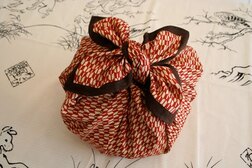 Japanese Furoshiki Japanese Furoshiki Make it yourself! Now you don’t always have to be super creative to make something fun and even doing something simple like making your own cards, or getting the kids to, can help cut down the waste. Most cards do unfortunately come wrapped in plastic and most wrapping paper can’t always be recycled. So even if you can’t make a full present for someone, perhaps consider wrapping it in something you have made. Don’t restrict yourself to just wrapping in paper, think scarfs or cloth scraps (like the Japanese do with Furoshiki), jars or old maps! If you are using tape to secure presents then also consider using paper tape as an alternative to plastic tape. What can also look very pretty and creative is using string or ribbon too. If you really aren’t creative and/or don’t have the time, head to the card shop in Southbourne as there are a selection of recyclable cards, ones not in plastic or charity donation cards.  Now what about food?! Surely it’s not a real Christmas unless everyone is passed out on the couch with a proper food baby? Yes it is often known as a time to over indulge but with some proper planning you can not only reduce your food waste but also the impact on your wallet! Be realistic with portions and how many you are cooking for so you aren’t eating turkey for a week. Perhaps try moving away from the traditional turkey dinner and try some more plant based dishes too. If you are unsure of how many friends and family members will turn up un announced then consider foods that will last, like Christmas cake versus a salad for example. Making it yourself will also mean it’s less likely to come in plastic! Of course food isn't just for the day, consider food gifts as presents. From chutneys to cookies this is especially a good way to use up any excess food you have grown over the summer. Why not be super organised and head to the charity shops on boxing day to pick presents for next year? A lot of unwanted presents end up here and quite soon after Christmas so go grab a bargain! Of course a big area for waste is the decorations. So much so we will address some alternative options for decorating the house in the next blog post...stay tuned!  The mysterious Bokashi Bin The mysterious Bokashi Bin The first time I heard someone say the word Bokashi, I politely responded with 'bless you'. Turns out they were not in the midst of a hayfever sneezing session, but talking about composting bins (easy mistake to make am I right?!) Of course I was still no clearer on what a Bokashi was, but to try and save face I nodded and agreed with what my friend was saying and then quickly got home and googled what on earth she was talking about. Turns out Bokashi Bins are pretty darn clever composting systems and so to avoid any future composting conversation faux pas, I swiftly purchased my own and put them to the test. Here is my guide on what they are and how to use them so you too don’t end up unnecessarily blessing people. So what is it?! In short the Bokashi Bin system allows you to compost ALL food waste including the usual suspects but also cooked food, meat, fish and cheese, all from the convenience of your kitchen. What you will need are two bins, some Bokashi Bran (the stuff that works it’s magic to break down the contents of the bin), and a scoop and....that's it! So let’s take it step by step on how to use it. Once both your bins are assembled (which is simply attaching the tap and slotting in the inner drain trays, all very straight forward) take one of the bins to use first, while the other gets stored away (more on this later). Then start filling your bin! It is best to do this in layers and in between you sprinkle the bran. In the famous words of a beauty advert - here comes the science bit! (cue eye roll) Bokashi is a Japanese word meaning ‘fermented organic matter’, where the bran material has beneficial micro organisms (think friendly bacteria) which all work together to speed up the composting process, and (thankfully) prevent putrefaction and any bad smells So once you have put a layer of food in your bin, sprinkle a handful of bran over it in a thin but even layer and repeat, it couldn’t be simpler. You continue this until the bin is full, but it’s not quite done yet. The bran needs to go through a fermentation process (like beer but definitely not beer!) Which takes approximately two weeks to complete. This is why you have two bins, so while the first bin is doing it’s thing, you can continue filling the second bin.  Now what to do with all your freshly fermented material? You have two choices, either pop it into your outdoor composter or bury it directly into the ground. It’s best to have soil to cover it and keep away from plant roots as initially its quite acidic, but after about 7-10 days it is neutralized and ready for plants. Seems to good to be true? There are some rules to follow, but don’t worry they are very easy -
And....that's it! A great way to conveniently dispose of your unwanted food scraps.
I often get people asking about the smell and genuinely this hasn't been an issue. It's more like a pickled smell rather than a bin smell. Its perfect for anyone with limited space and wants to do their bit to eliminate all types of food waste. Not only will you be helping your plants but helping the planet too. I purchased my starter kit from www.wigglywigglers.co.uk who do a range of composting options as well as Bokashi bins. You can buy subsequent bags of bran from them too which have the added benefit of not being packaged in plastic. Win win! Guest blog by Lauren McIntosh My journey into reducing waste and not buying new clothes….. So I decided as a new years resolution around 3 years ago that I would stop buying new clothes, and as far as possible new material items in general. I figured this would be quite simple to do as I didn’t really need any more things and there was a lot already in the word. Me buying more things would only result in more things needing to be made to replace what I bought and then this vicious cycle of buying and making and throwing things away when things weren’t really past their best. just were not what we ‘fancied’ anymore. I spent 9 months travelling around India, Indonesia and New Zealand and living out of one bag which really makes you question how many pieces of clothing you need and how essential items are, or whether they are more of a luxury item. Coat £6 from car boot, a Norwegian brand and white jeans donated by my sister Now my mentality is quite simple: I refrain from buying clothes new as much as possible, and if I do need something then I will rummage around my local charity shops until I eventually (which I most often do) come across the item I have been looking for the past few months! My friends also now know me as the person who is constantly on the scrounge for their second hand goods so I am usually the first port of call before things go on to the charity shop or clothes bank. It has also made me very resourceful and much better at upcycling my own clothes, making repairs and giving pieces of clothing that new lease of life to wear them again. All it often takes is a bit of imagination into how things can be repurposed, and a bit of creativity to make something new out of something that already exists. Two piece skirt dress worn for my sisters wedding -£3 from the car boot sale, originally from zara! A big bonus as well is that I must be saving money along the way! I get a huge buzz when people comment on a new dress or a new coat I’m wearing and can respond that “it only cost me a pound!”. There is also a great feeling knowing that something that I am wearing or using has been used and owned by someone else before me, I feel as though this way my clothes have a bit more character and a bit more interest than just your standard high-street top that everyone is wearing this month because they’ve all trawled through the same shops and seen the same glossy magazine adverts. So the message is simple - play the charity shop game! When your wardrobe needs a bit of a spruce up, hunt through those charity shops and see the potential in their items, knowing that you’ll be supporting charities and a good cause as well, rather than a seemingly questionable fast fashion industry. Trainers rescued from a camp site in new zealand - my size and now wear them every day!
This is a quick update following our first event last week, so that we get out links, contacts and copies of presentations (where we have them) so that we can keep the momentum going – getting us all doing more! But I have to say what a great event it was and thanks to all of those who came along. It was heartening to hear all the great work that people are already doing and have been doing for a number of years, as well as those individual actions that add up to much more when we all make a positive change. Also we thought that it would be good to have all the information that was given out in one place so you can refer back to it and also spread the news wider for people who couldn’t make the event. There are links to the presentations given plus email, web and social media addresses for all the groups. If you have a question and it’s not answered by the information given then I’m sure any one of them would be happy for you to contact them or you can send us a message. I certainly learnt lots, so am off to put some into action - watch this space for my journey into the textile and clothing story. We've also added to our ideas page a waste free grocery shopping locally - take a look and let us know if we need to add anything. repair_cafe.pptxContact details & Documents:
Bournemouth County Council Recycling & Waste Email: [email protected] Recycle more presentation click here Ideas2Action & Win on Waste Southbourne Email: [email protected] Transition Bournemouth Transition presentation click here Email: [email protected] Transition presentation part 1 click here Bournemouth Repair Café Presentation click here Jacky Engel, Textile recycling Information sheet on cotton production click here Switch-It Clothing Exchange Boscombe Community Fridge Dorset Devils Email: [email protected] Plastic Free Bournemouth There is often a much simpler way of doing things- If you make the effort to look for it. 'Simplicity does not just happen’ (Edward de Bono). I’ve been reading and thinking about what it means to be zero waste (sending nothing to landfill). And as usual the more I read the more complicated it seems. We in Sobo Wastebusters started to unpick the recycling issue - The what, where and how we can do this locally! We’re pleased to say that we are going to have our first event on Tuesday 26 February just to talk about local recycling and waste reduction. our Stuff stands in the way of our dreamsI have lots of stuff, what do I do with it? A zero-waste way means that I should be simplifying my life and what I have in it. My question is what do I do if I want to declutter? I’ve read that ‘The clutter filling our spaces impacts on our productivity, stresses us out and keeps us stuck. Our stuff stands in the way of the lives we dream about’. It is true that stuff blocks your vision? I’m always reminded of this and notice all the stuff I have when I come back from a trip. how much stuff do we need? |
| I am surprised about how little I really need on a day- to-day basis. For example I’ve survived with only a rucksack when travelling for 7 weeks. You plan, prioritise and take the stuff you know you like to wear, things that are useful or necessary and lightweight! So why don’t we do this the rest of the time? I think we all have been conditioned into thinking that we need things that we really don’t. Even now we are at risk of thinking that we need to buy new eco-friendly stuff, when actually we don’t. We’ve probably got something that will do for now. For example do we really need a bamboo cutlery set? There’s lots of cutlery in the draw that we’re not using. I've actually got plastic versions from a picnic set. It’s thinking about the whole picture and being creative. The plastic cutlery isn’t going to go anywhere anytime soon, so you might as well use it. This seems so simple, but comes as a revelation when you start applying the same thinking process to the stuff you already have. |
de-clutter the 'KonMari' way
| For me 'refuse' and 'reduce' are interconnected. Refuse, the basis being; If you don’t love it let it go! However, my next question is can I reuse it for something else? A broken mug I’m fond of as a plant or toothbrush holder. Next step, recycling this doesn’t always mean the recycling bin. First is charities or charity shops. For household goods there are a couple of organisations looking for things to help people on low or no income to furnish their spaces. Clothes and textiles are a big one, buy less, better quality, swap with friends, re-fashion, swap with the switch-it clothing exchange, give it to a charity shop or a textile bank. We will talk more about this on our first event at Terroir Tapas 26 February. |
REFUSE, REDUCE, REUCE, REcycle..........
Refuse – Say no to things. I think this means not only not buying things new but saying no thank you to other people offering you things or even giving you things. A bit like saying no to unnecessary Christmas and birthday present. Plus no to bags of any sort, take your own. Or the paper napkin, wooden stirrer and paper straw!
Reduce – Bulk buying, refilling (remember to bring your own bags/ containers)
Reuse – From clothes, furniture, to paper bags. Even a paper bag has to be recycled or composted. I’ve started taking a bag I’ve dedicated to bread.
Repair – Like reuse; if it's broke get it repaired – we have our monthly Repair Café. Or ask a handy friend.
Recycle – Still don’t need it? Recycle, donate to a charity or groups in need. This can be food as well as stuff. There are some great schemes around such as the Boscombe Community Fridge, Olio food sharing app, local food banks – see our ever growing local recycling guide list.
Recover - This could be composting at home through the food waste collection
To achieve simplicity you have to want to get it, and put a high value on it.
the first sobo wastebusters event
Come along and learn more about our options for recycling and repurposing locally, at our first EVENT on the 26 February at Terroir Tapas in Southbourne.
The event is FREE but please book so we know how many to expect - See you there!
The event is FREE but please book so we know how many to expect - See you there!
So recycling seems to be the topic of the week. If you can’t manage to find things plastic or waste free then the next option is to recycle. Bournemouth Council seems to be doing a good job compared to other authorities, and I went to an informative talk by their Senior Waste Officer at Southbourne library last week.
Local recycling facilities
In an attempt to make things easier we have created a page for local recycling facilities on our Sobo Wastebusters website. Take a look at our page and let us know if there is anything else you know about or want to know. As this is work in progress we are very happy to received feedback.
So are they or aren’t they recyclable?
Bournemouth kerbside collection will take the following:
Plastic Packaging (remember they need to be clean!):
Drinks bottles - fizzy drinks, squash, milk; Detergent bottles - washing-up liquid, cleaners; Plastic tubs, pots or trays - fruit punnets, yoghurt pots, meat trays (any colour); Shampoo & shower gel bottles; Plastic lids in fact all bottles tops.
Plus: Foil & foil trays, Food and drink cartons (tetra paks), Envelopes with windows, metal packaging, cardboard, mixed glass and paper.
If in doubt you can always ring the recycling team at the Council to check!
Plastic Packaging (remember they need to be clean!):
Drinks bottles - fizzy drinks, squash, milk; Detergent bottles - washing-up liquid, cleaners; Plastic tubs, pots or trays - fruit punnets, yoghurt pots, meat trays (any colour); Shampoo & shower gel bottles; Plastic lids in fact all bottles tops.
Plus: Foil & foil trays, Food and drink cartons (tetra paks), Envelopes with windows, metal packaging, cardboard, mixed glass and paper.
If in doubt you can always ring the recycling team at the Council to check!
Signs and Symbols
Other things that everyone finds confusing when it comes to packaging are the various symbols, signs and labels that supposedly are there to help you.
So here’s a quick guide:
So here’s a quick guide:

So these are commonly seen on packaging now and are fairly comprehensible. Obviously the check locally one is difficult but should be easier with the above advice.
Compostable or biodegredable?
| A biodegradable material is not necessarily compostable but a compostable material is always biodegradable. In a lot of cases biodegradable is just plastic that breaks down into smaller pieces of plastic quicker than normal plastic. In other words worse than regular plastic as it becomes micro plastic sooner! I won’t bore you with the details but biodegradable is only one element test in whether something is compostable. Again it may need to be processed separately. Basically compostable is better. |
Still baffled? If you’re interested in this and unpicking the issue, we’re going to be running a reduce your waste and recycling event at the end of February. So keep an eye open or sign up to our mailing list or FB page with just the practical advice of what we can do locally.
To end on a positive note though I did though find some egg cases of undulate rays on the beach near Hengistbury head - nature reminding me why I care about waste and making the changes, thinking about what’s happening to these animals and their and our environment.
Happy New Year – Food Basics
Hope you all had a good rest with friends and family over the festive season.
I aiming to make things easier for myself and my partner this year, as last January I really tried to go cold turkey on buying plastic free products as well as reverting back to being vegan after 30 years of being a vegetarian.
I started with our food staples which meant, amongst other things, making our own bread, and no pasta or rice until I found a plastic free source. Giving rise at one point to comments ‘that I couldn’t just give away bread to anyone like it was cake’!
I aiming to make things easier for myself and my partner this year, as last January I really tried to go cold turkey on buying plastic free products as well as reverting back to being vegan after 30 years of being a vegetarian.
I started with our food staples which meant, amongst other things, making our own bread, and no pasta or rice until I found a plastic free source. Giving rise at one point to comments ‘that I couldn’t just give away bread to anyone like it was cake’!
Bread
| However over the last year, as you probably know, we’re lucky we have Bakehouse 24, Bennetts and M’s bakery all within walking distance. I also take my homemade produce bags to the co-op in Southbourne and fill them up at their small bakery section. We also did this at Aldi in Boscombe for a while, but the bakery seems to have gone now. |
PASTA & RICE
| In terms of pasta and rice you can get them either online (I’ve used The Plastic Free Pantry) or, easier, go to Sunrise organics in town where they have dispensers and you can fill your own containers, hurrah! There is talk of other shops opening, so watch this space or let us know if you use somewhere else. |
Pulses
MILK
FRUIT & VEG
| Finally in the ‘main’ food staples for us I also swapped, and had been doing for a while now, going to the fruit and veg shop in Southbourne with my own bags filling up my shopping basket, no need for things to be put in separate bags. Sunrise Organics and Earth foods also have a small selection of organic veg. Supermarkets also sometimes have things like peppers and fruit un-bagged. Another option for package-free is fruit and veg, are box deliveries from companies like Avon Organics, Riverford and Abel & Cole. |
Fish & meat
| So what’s next for me in terms of food? I’ve been trying to look at what else we eat and changes we can make. Even CUTTING DOWN THE RECYCLING - Sobowastebusters are going to do an information sheet on recycling and where it goes so that we all have a better understanding of where all our effort goes to and the difference it is or isn’t doing. |
| So what do you think you could do? Switch one thing a week? Make a LIST, start with something easy (bread, change to milk in bottles), tick it off (always satisfying) and let other people know. You’ll be surprised how much you achieve, let us know how you get on we’re about sharing stories and experiences. Good luck. PS Post Christmas is a good time to take stock of what you bought and used this year and what changes to make next. |
recycle un-recyclable items
Don’t forget, even some of the single use plastic can be recycled locally by Ideas2Action: Biscuit & crisp wrappers, corks, aluminium foil, stamps,
toothbrushes/ dental items, milk bottle tops, toiletry tops/ pumps & more.. Next time they have some extra after-Christmas items as well, read more here
Next collection:
Southbourne Library
Saturday 19 January 10.30 - 12 noon
toothbrushes/ dental items, milk bottle tops, toiletry tops/ pumps & more.. Next time they have some extra after-Christmas items as well, read more here
Next collection:
Southbourne Library
Saturday 19 January 10.30 - 12 noon
Reduce | For more ideas about how to replace single use plastic, have a look at the suggestions on our website |
Traditions are great, but where do they come from and why are we so attached to them? There are family traditions, national traditions and those invented by businesses trying to sell you something.
Here are a few - guess which ones are invented to make you buy things?
Christmas CARDS
First created by artist John Horsley in 1843 to encourage people to use the new Post Office service! So what are the options? i) Don’t send any, you can still donate the money to your favourite charity and explain that to people. ii) Be selective who you send them too – perhaps only those people you don’t see very often, live far away or are a little lonely (although a visit would be worth much more)
Whatever you do think about making your own if you want to send one or reuse images etc you have from previous years or magazines. You’ll find you become a little fixated on keeping and reusing things!
This year I’ve done a mixture of things designed and sent an image via email, used up cards I’ve already got in my stash and made others. I’ve had a positive response to the email version – as always things take a bit longer.
Christmas TREE
Unlike in other European countries the Christmas tree only arrived in the UK in the 1830’s, the evergreen version in 1841 – so again not a very old tradition. It seems that more people are buying live potted versions and reusing them each year.
There is also a hire version – but nothing local I could find. Or of course you can fashion something from an indoor plant, or a branch from the garden or step ladder – this is my favourite find this year. It’s nice to have your own tree decorations, but they can be hung elsewhere. I admit this is one of my must do better next time as I have a dead tree – so if you do buy a cut tree make sure you recycle it.
Bournemouth has been good at collecting & chipping them (and probably selling back to us for the garden), better still diverse abilities charity will collect for a small donation or you could compost it yourself.
Christmas CRACKERS
Again invented in the 1840s by a sweet maker making the ‘crack’ when pulling apart made them popular and the hats and novelty gifts were again a later addition that his sons did. So I think everyone would say the ‘crack’ is probably still the best thing about them. Everyone agrees the novelty gifts are mainly rubbish to start with and no one likes wearing the hat!
So make your own. I’m going to have a go this year – toilet paper rolls, paper, a hand written joke, and a handmade chocolate. You can buy the crack or they’re called snaps for the crackers and I’ve been tempted to buy them but I haven’t as I would bet that they’ll come in a plastic bag! I’ve also got some masks from an event I did that we’re going to use instead of hats. Making crackers with children should be fun – give it a go.
Christmas STOCKINGS
Is a little older tradition and comes from St Nicholas, the gift giver. Who legend has it sent a bag of gold down a chimney for a poor man who had no dowry for his unmarried daughters that fell into his stockings left hanging to dry – he became our Santa Claus.
So a sock will do, or pillowcase is what we had as children and they held the main present(s) not the extras. If you want the fun of the stocking then put in the Satsuma and edible things – they don’t have to be wrapped.
Christmas ADVENT CALENDAR
First used in the 19th and 20th Centuries by the Lutherins as a count down to Christmas. Originally religous scenes linked to advent devotions yet another excuse to hype up spending and waste at Christmas. It’s nice to have a treat of chocolate every day.
But you can make your own. Collage one from old Christmas cards, magazines, scrap fabric. Include a poem or something that’s meaningful to the person you’re giving it too. I’ve personally ran out of time this year so haven’t bothered, and am not suffering any ill affects!
Love what you have or give it away
I’m certainly not perfect – but being a hoarder, I do have many home made Christmas decorations for, and I love taking them out each year.
If you have too many, gift them on or, if you have enough room, you can rotate them year to year.
Thoughtfulness and planning
As with many things that we’ll talk about, thoughtfulness and planning are key if you’re going to make changes.
So I’m doing what I can, and having thought about it more this year means I will be better prepared for next year.
Author
Rosemary Edwards
Sobo Wastebuster
Archives
January 2020
December 2019
October 2019
June 2019
March 2019
February 2019
January 2019
December 2018
Categories
All
Carbon Foot Prints
Christmas
Christmas Presents
Christmas Shopping
Recycling
Zerowaste

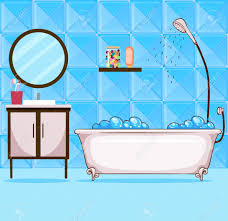




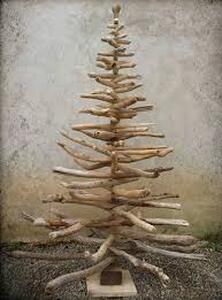

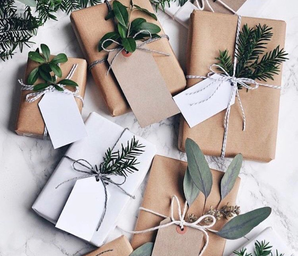
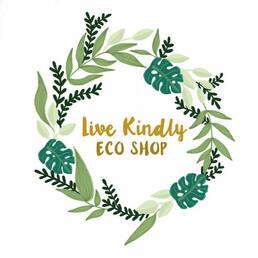
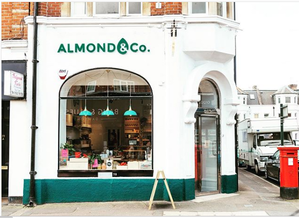
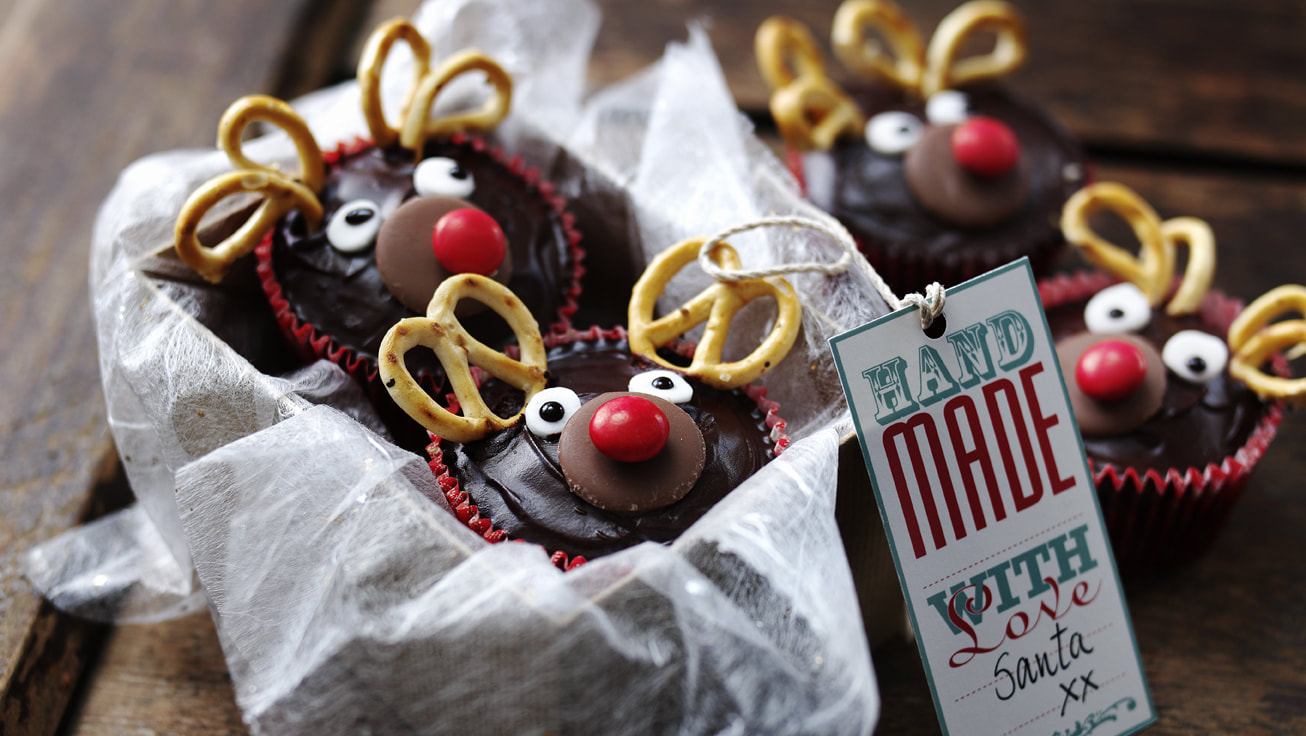



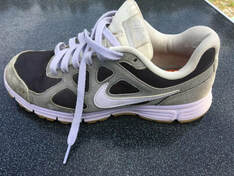


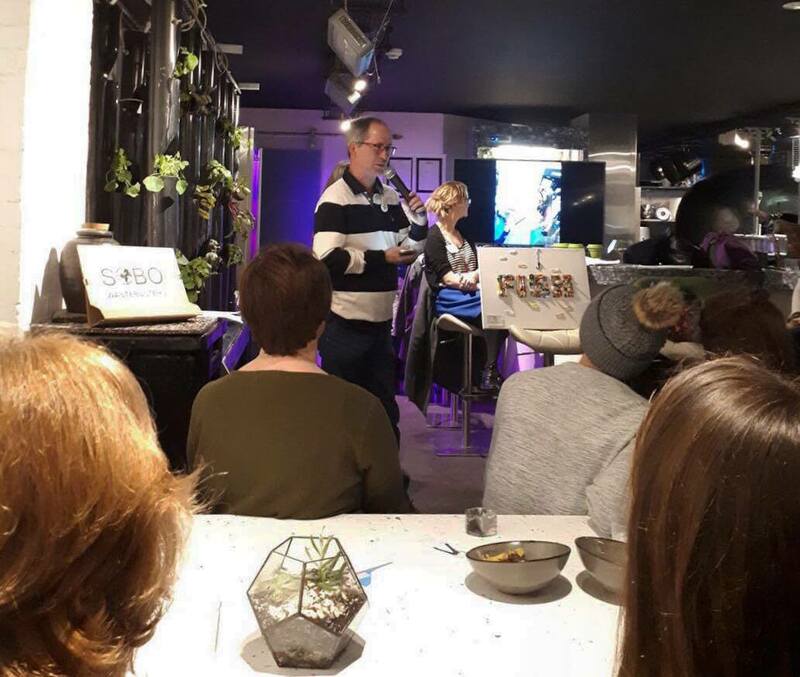

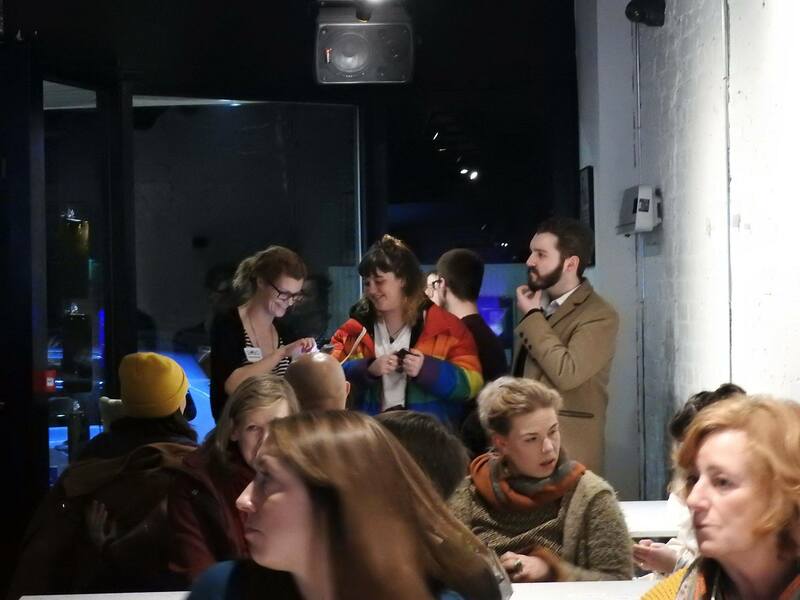

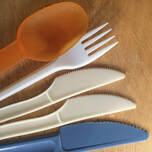


















 RSS Feed
RSS Feed
